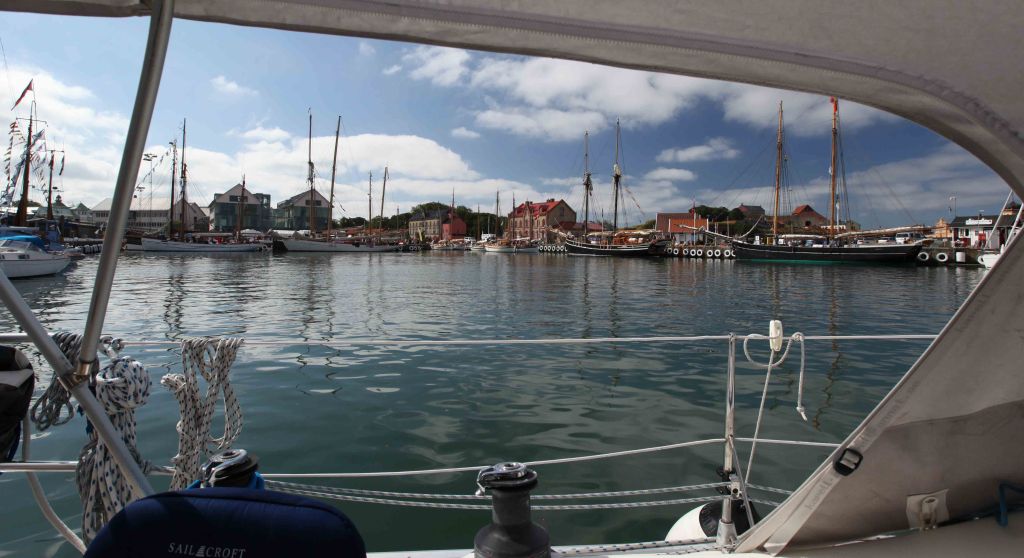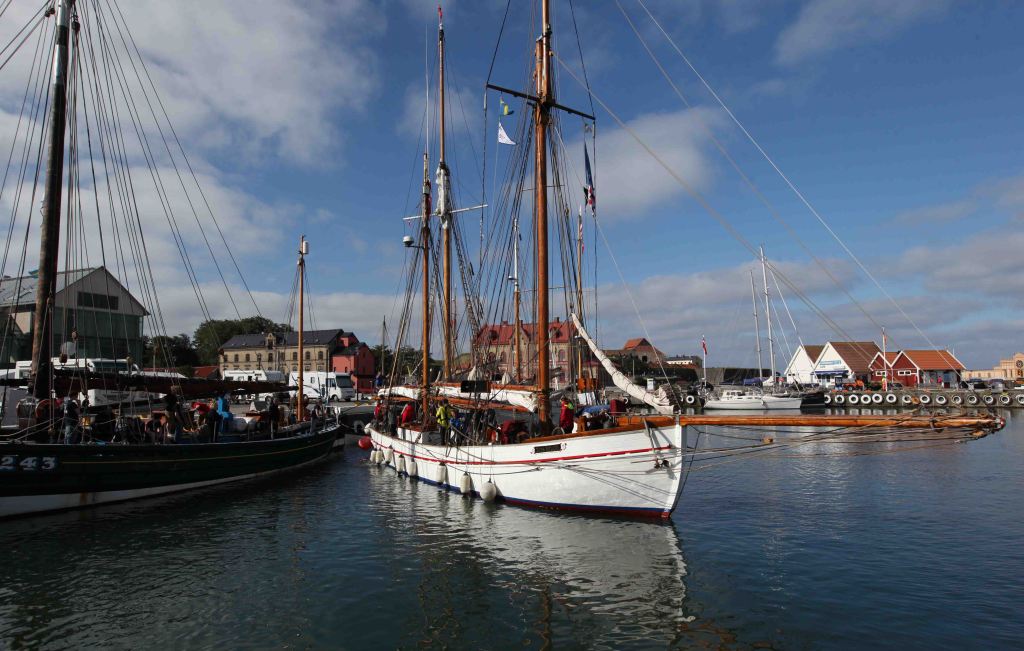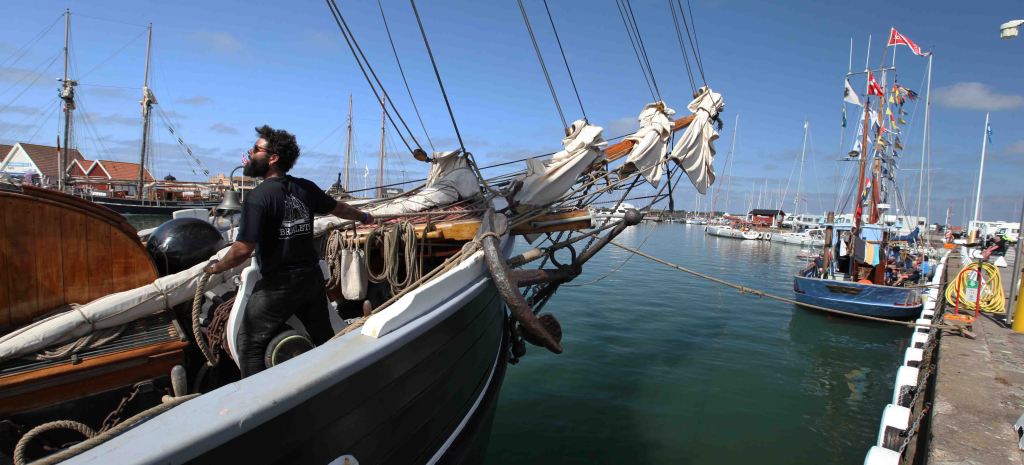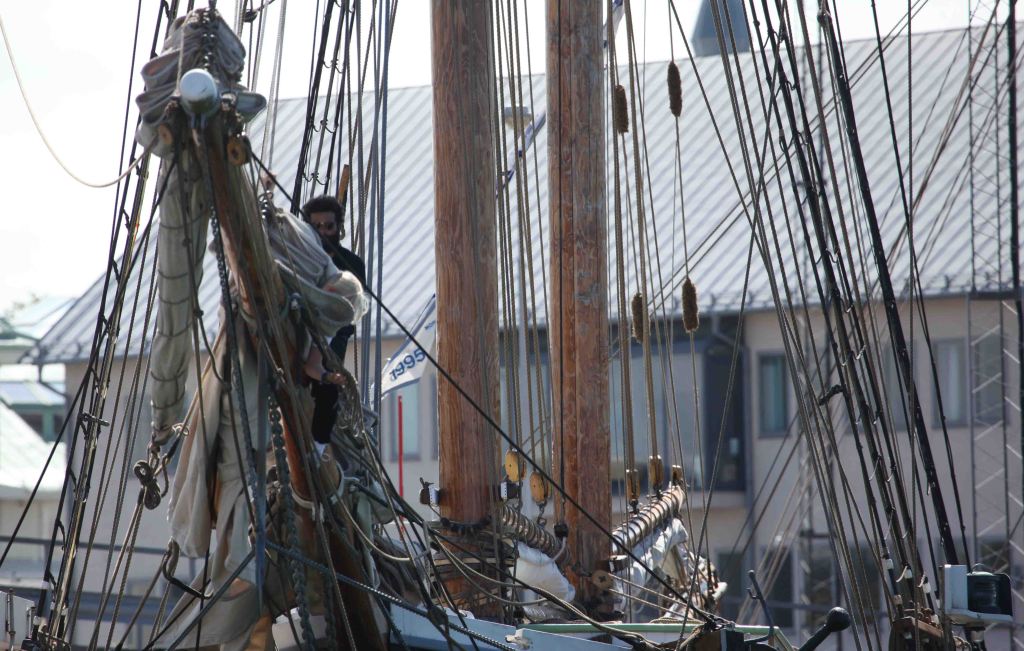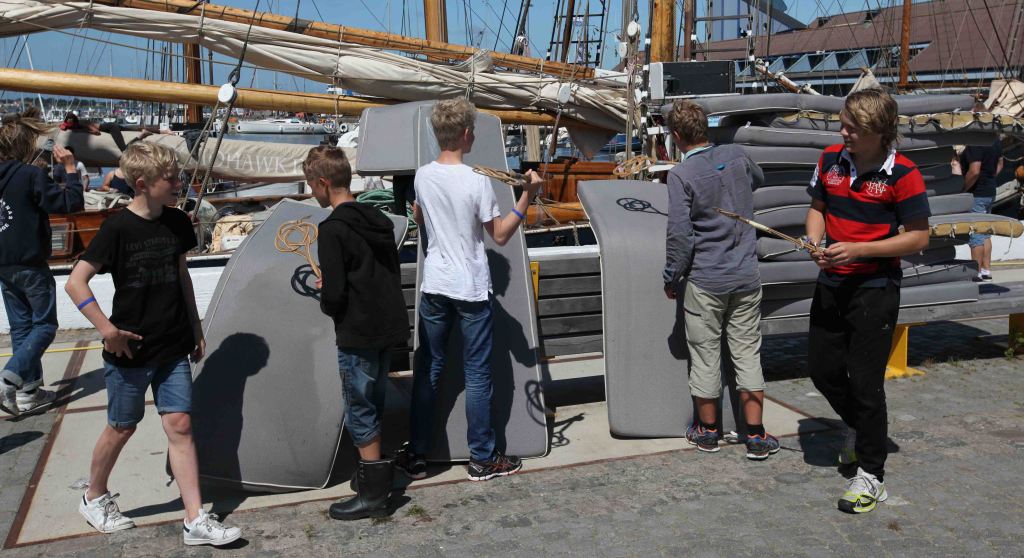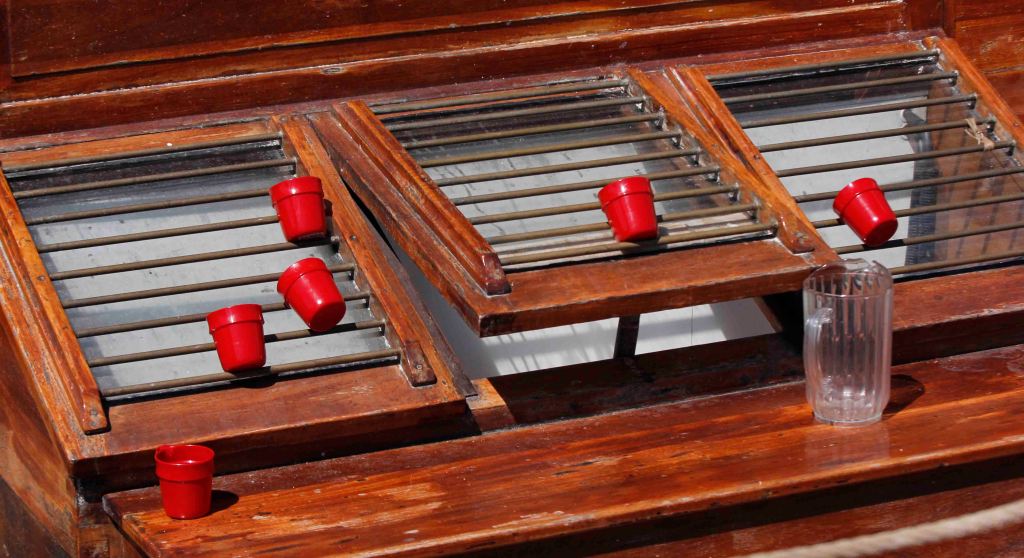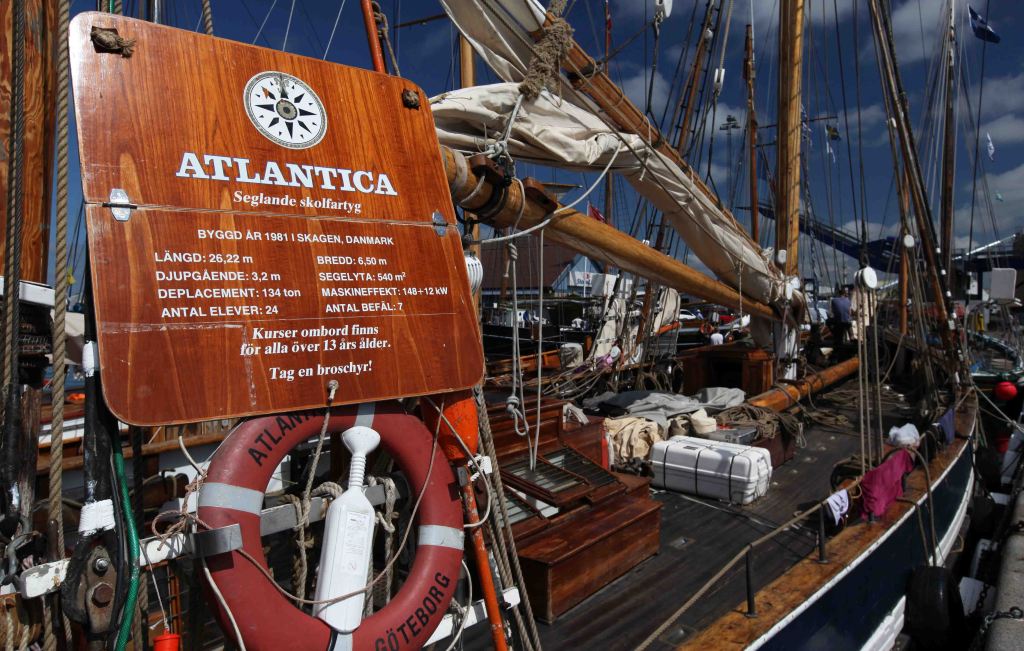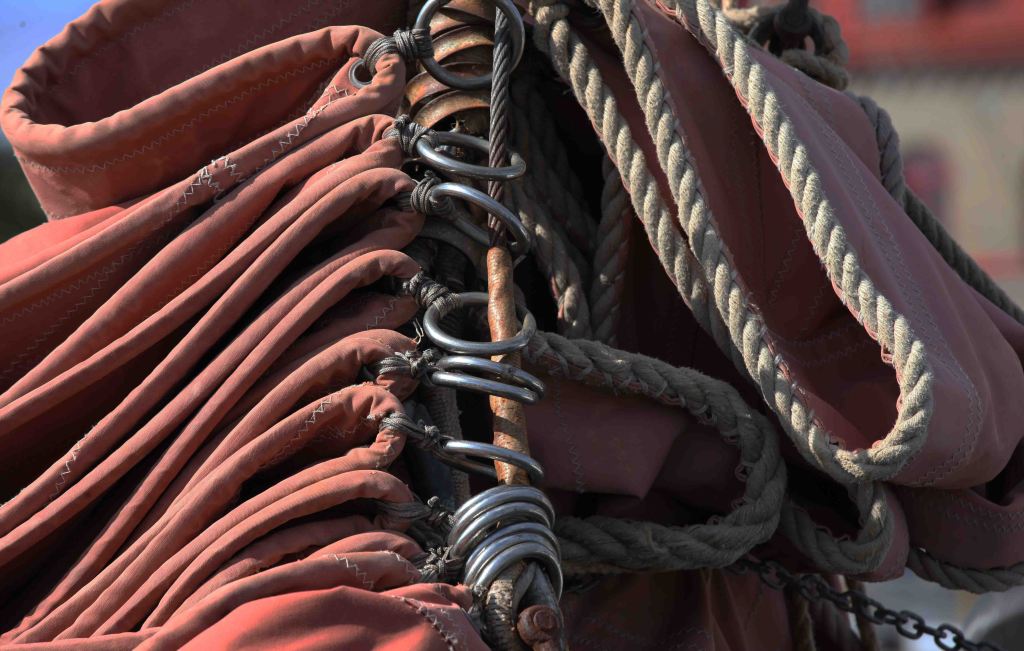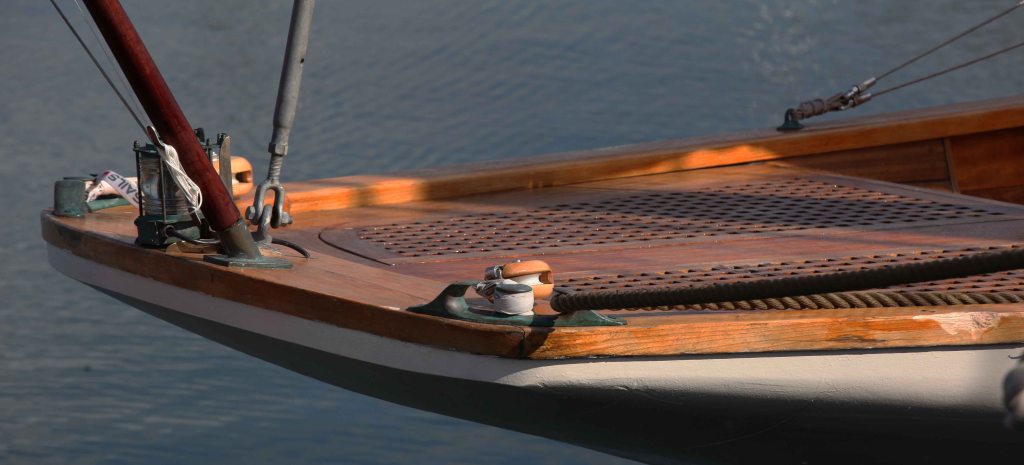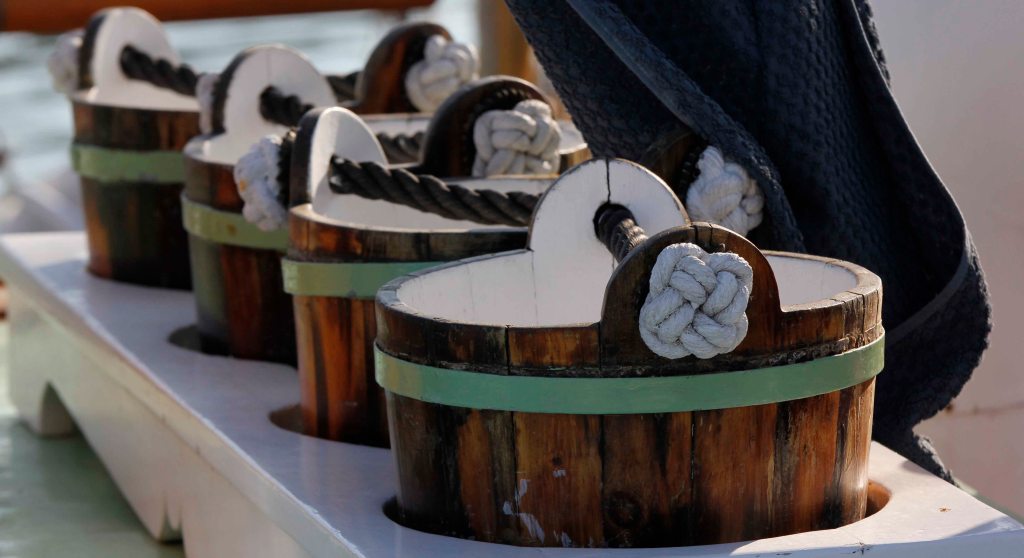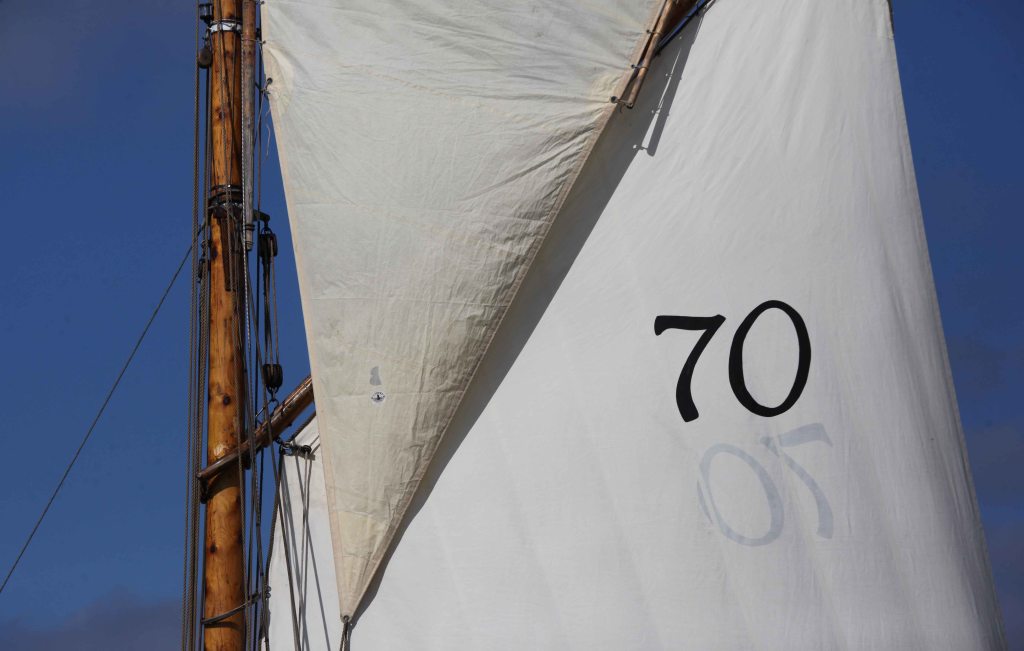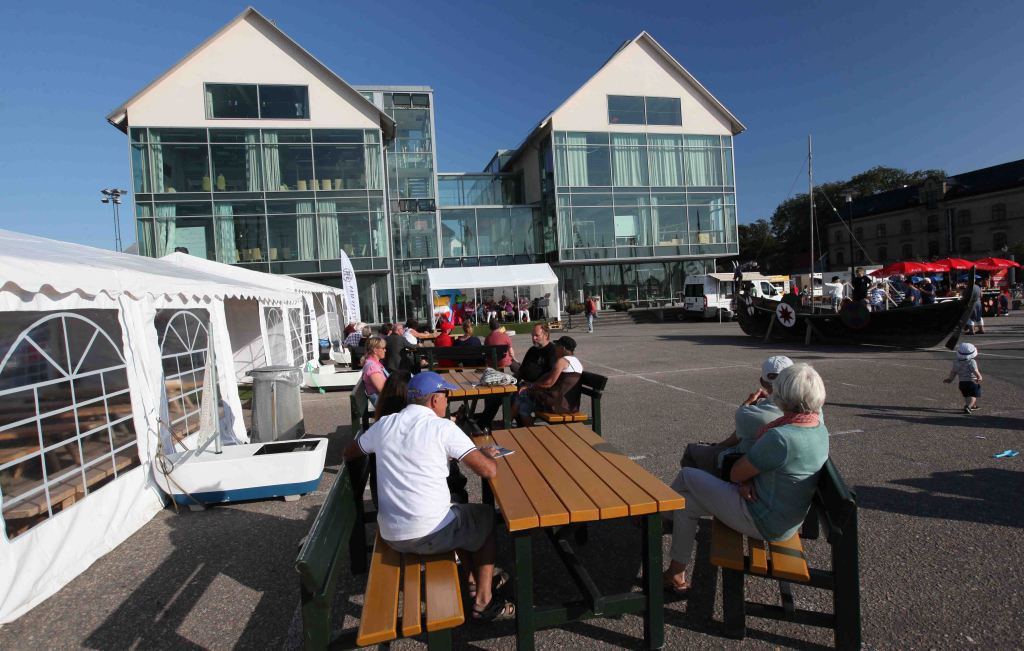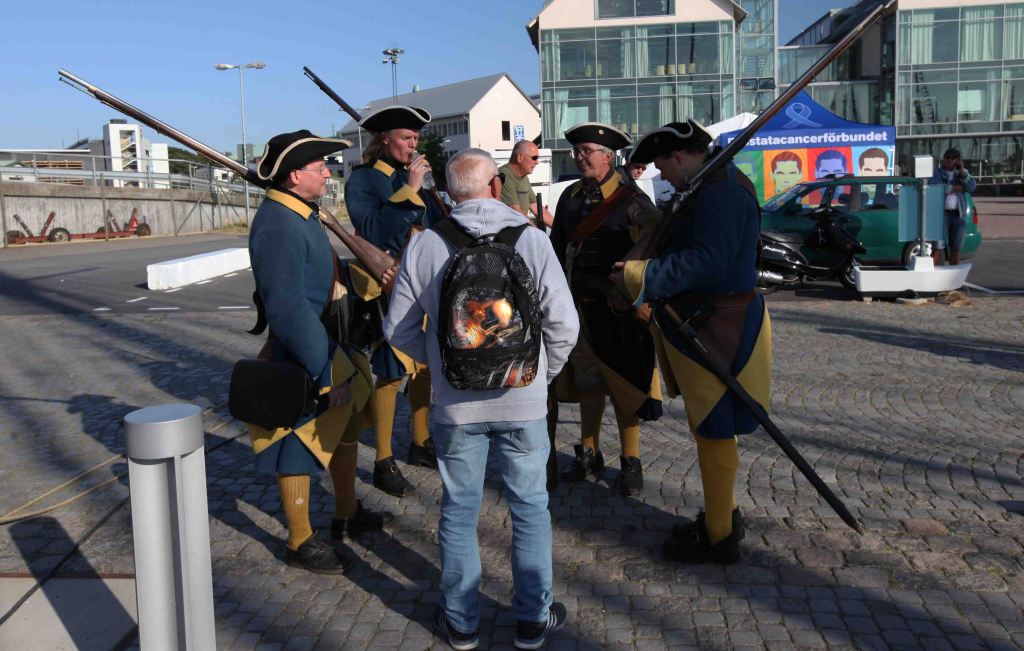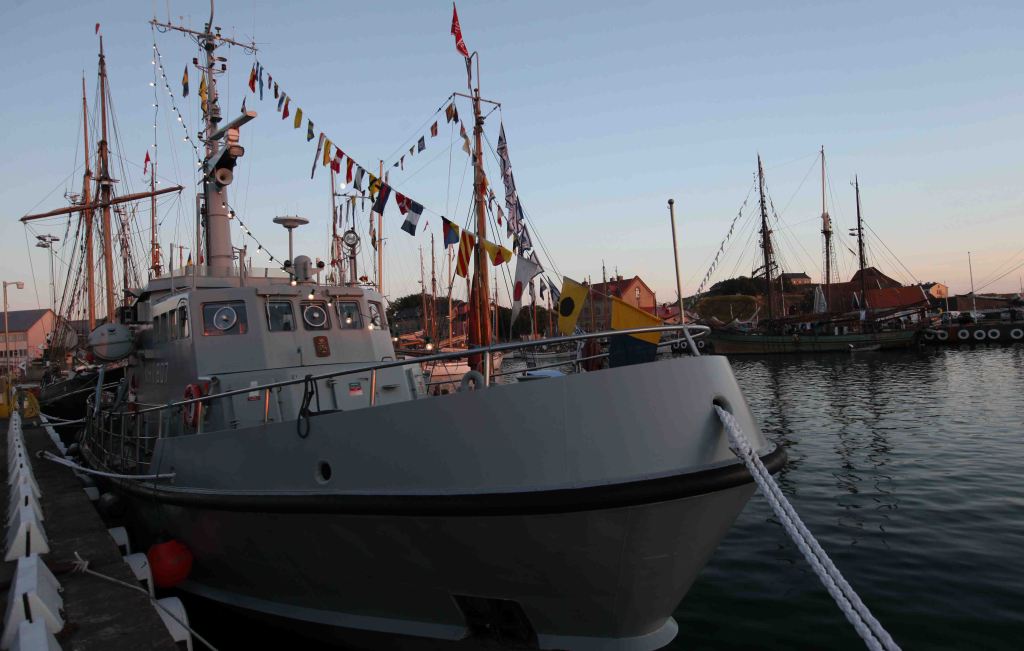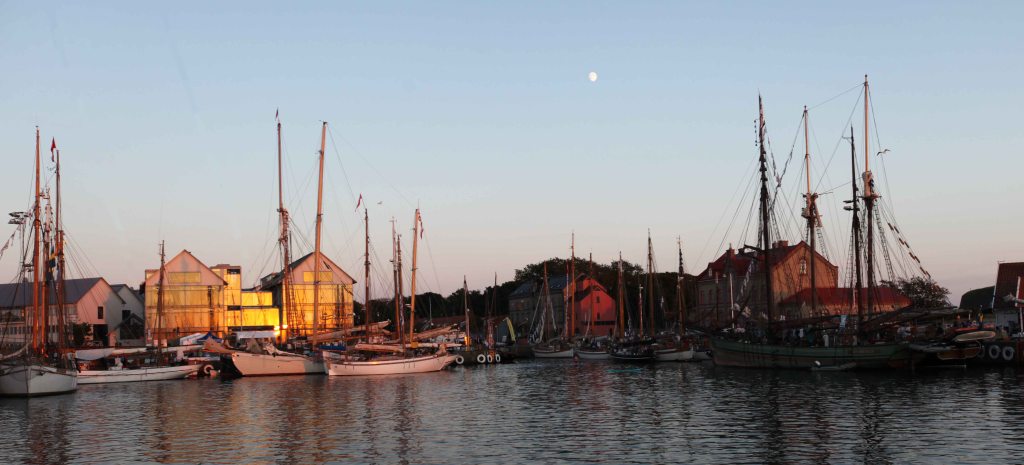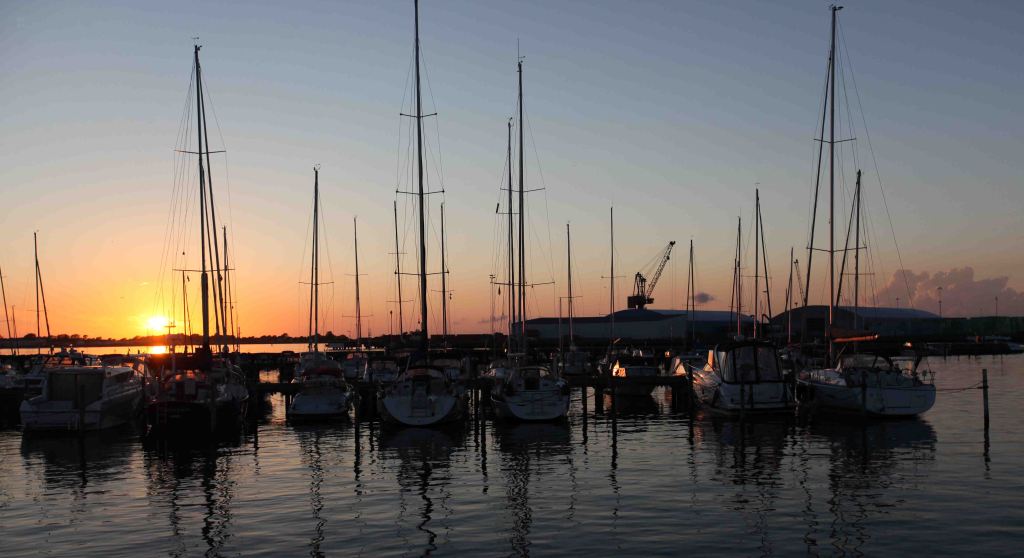Nordisk Seglats 2017
Nordisk Seglats is a youth camp on water, arranged every year as a multi-stage sailing competition. In 2017 the race went from Aalborg DK to Varberg SE, an overnight in a natural harbour outside Gothenburg, ending in Fredrikstad NO.
Most of the boats are Danish, Swedish and Norwegian school boats with up to 38 persons on board, but there are also smaller boats with 4 or 5 crew. Several of the ships were forced to break the competition, one had to use its motor to get off ground, but they still met up in the ports and continued the sail with the group.
We arrived in Varberg on Wednesday, on our way home to Lomma, and tied up at our usual spot along a pier. Later we learned that the 22 ships in Nordisk Seglats were to moor in the inner habour. We were lucky to be among the few that could stay.
Varberg is a beautiful summer town on the coast of Halland. It has two marinas. We like the town marina
close to the fort and the bathhouse (above). It is only a few blocks walk to the shopping center with all the usual
facilities and lots of restaurants. Getterön Marina across the bay is connected by a frequent shuttle boat.
We did not know about the event when we arrived in Varberg, and were lucky to be able
to stay at our spot along a pier, so we spent another day in Varberg to watch the ships
arrive. This was the view from our boat Wednesday morning after the first ships arrived.
This ship, Dyrafjeld, was one of over 20 ships that came to the harbor. It was
built in Norway in 1889 to carry freight, 33 m long and carries a crew of 20.
Jens Krogh from Denmark, built 1899 for fishing, 24 m long with crew of 19, in the process of tying
up outside Swan from Lerwick, Shetland Islands, built 1900 for fishing, 21 m long with a crew of 15.
It took a long time to moor as the ships moved slowly and very cautiously.
On the right, Brita Leth from Denmark, used both engine and sail power to get into
the mooring space. She was built 1911 as a freighter, 33 m long with a crew of 15.
There were narrow margins as the ships were packed in.
The heavy, old hemp ropes did not make it easier to moor.
Many of the ships used this technique to secure mooring lines.
Brita Leth moored. The man in black guided each boat into its assigned space.
This ship mainly used sails and a bit of tugging to get into place. There were a couple of boats that looked like this. We think this is
Faerd from Norway, built 1931 for fishing, 11.5 m long with a crew of 4. The current owners bought the boat in 2012 and live on board.
The harbor starting to fill up.
It was very tight after a while.
Tight!
Once the ships were moored, it was time for housekeeping, like securing the sails.
Some tasks required climbing the rig.
Securing sails on Dyrafjeld.
The ships take on paying crew, who learn how to sail and care for the ships.
Folding a sail.
Ropes on board the Swan.
Part of the job when you come into port – swab the deck. They used sea water scooped up with buckets, not fresh water.
Atlanta, Sweden, built 1981 as a school boat, 24 m long, 7 staff and 25 students. The student crew had to pull out all the mattresses on board and beat them.
And when the work is done – food cooked and served on board.
Someone forgot to clean up.
A harbor official handing out coupons to crew members for ice cream or soft drinks.
Svenska Kryssarklubbens sailing school ship Atlantica. It accepts students as young as 13 years old.
One member on Jens Krogh was very young.
The ships had sailed all night before they arrived in Varberg. Some crew needed a quiet place to sleep.
Students do not need any sleep and were very active all day.
Learning how to manage a dinghy.
Nordisk Seglats has an long tradition. Each participating ship gets an annual flag. The oldest flag we saw was from 1993.
The yellow sign on the right is for the shuttle to Getterön.
Sight of the masts when walking into the harbor from downtown Varberg.
Each rope has a purpose, no extra lines.
The main sail on board Swan.
Front sail attachment.
Similar front sail attachment, using large metal rings.
Stern
These buckets were used, not just for decoration.
These are satellite antennas, even if they look like mushrooms.
Atlantica
Lights
Faerd moored with sail power.
Kvartsita, Sweden, built 1945 for cargo, 33 m long and crew of 38.
Some crew used old methods to dry their laundry – string instead of clothes pins.
Bifrost, Sweden, built 1988, 12 m long and crew of 5.
Traditional west coast music to entertain the visitors.
Karoliner, soldiers of Karl XI and XII, 17th C. No idea of why they are here but they turn up in odd places.
Evening sun.
The MVH 807 Jupiter belongs to the Danish naval civil defense and is used to help ships in need. They
often participate in the sail events. They were well prepared for the evening with displays of flags and lights.
Close to sunset, and the harbor became very quiet.
Sunset over the marina outside the inner harbor.

